
In the previous blog of this series I talked about a shift in culture in the US, and the rest of the world. Pro basketball started embracing the street influence in the ‘90s, and that translated into game design of the 2000, and 2010’s. One of the first online MMO developers in the basketball market was JC Entertainment out of South Korea. They had released Freestyle Street Basketball a few years after EA Big had published NBA Street. Both companies exposed several generation of kids to the street game. In 2016 JC Ent. made 3on3 Freestyle Basketball. It was a cross-platform successor to their earlier titles. With it another new hero was announced. He was a return to the classic Saru design from their oldest franchise, rather than the too heavily street-influenced Jack from Freestyle2 Street Basketball. The new face of the franchise was a kid named Joey. The nice thing about having a franchise of streetball games was that the publisher could actually re-introduce Freestyle, and Freestyle2 characters over different seasons. They were all a part of a massive shared basketball universe.
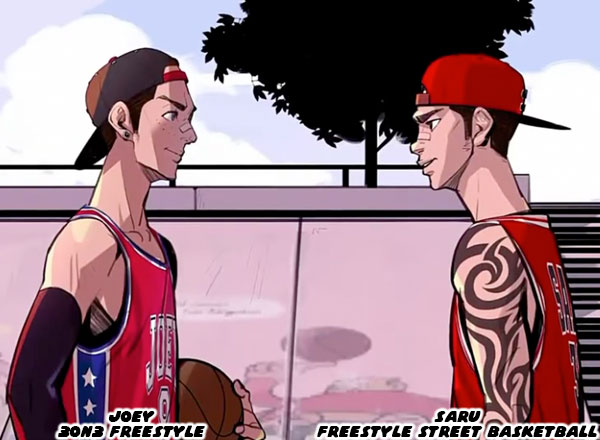
On the surface level Joey had a similar look to Saru. The red jersey, the backwards baseball cap were the most obvious things. Instead of sleeve of tattoos Joey had a literal shooting sleeve. The publisher was already established in Asian markets, but they were ambitious to sell their franchise to the west, which was a massive potential customer base. In order to do that they had to make sure that the game didn’t look like it was made by a Chinese, or Korean developer. Joey was presented more of a western character, as his look was just a hint more of the western comic style, rather than the anime style. There was a sort of universal understanding that manga characters modeled in 3D were Japanese by default. JC Ent. had to go out of their way to make sure that audiences could read that Joey was western. If the star spangled sides of his jersey couldn’t make it obvious, his eyes, and skin color had to be more overt. His design could almost work in a Pixar film.
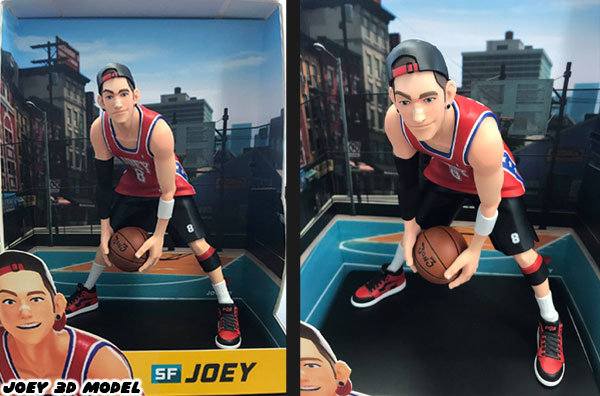
During the release of the game they had the audacity to create, and paint a resin model of Joey. As far as I know it was only used as a promotional piece in their trade shows. Of course I reached out to the studio to ask if they considered selling it, as it was exactly my favorite type of design. Sadly I never heard from them. The creators working at JC Ent. and their contemporaries were keenly aware of basketball players, basketball culture, and the subtleties in the styles of players, and moves. A lot of the work they put into the game would be easy to miss to casual gamers. Those like me who were obsessed with details could pick out the levels of influence that went into the title. For example, did you know that some of the real life top players had a go-to dunk when they played? They used these reliable moves when they wanted to make a statement. LeBron James had a powerful pull back dunk. He would bring his arm way back, and slam the ball through the rim with tremendous force. He used this move while he was still in high school, and continued the tradition through his career. It was a signature move slam when playing for different teams. The dunk was easy to spot when the animators at JC Ent. used in in their game. Not only that but the pose itself was so well known that it would be easy for them to create a logo out of it for a fictional brand, similar to how the Jordan silhouette was used to trademark his own logo. It wasn’t the only absurd detail that the studio put into the game.
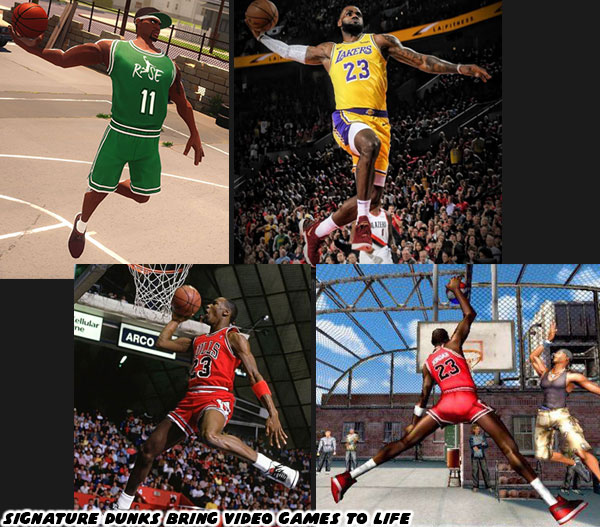
Kids from this generation might be familiar with the legend of Michael Jordan, but they weren’t alive when he was in his prime. He dunked with such authority, and frequency that his nickname became “Air Jordan.” His kick-out dunk was recreated in NBA Street 2. While the JC studio used general influences when adding new teams, and characters into their title. There were a few interesting characters that actually had streetball roots. The monkey kid Goku for example was more than likely inspired by the Japanese freestyle player nicknamed BUG!? He could flip, and spin with the dexterity of a b-boy, while dribbling a basketball at the same time. The best studios knew who to look at from the international community, and not solely the USA when they needed to create stylish trick moves, and outlandish personalities as well.
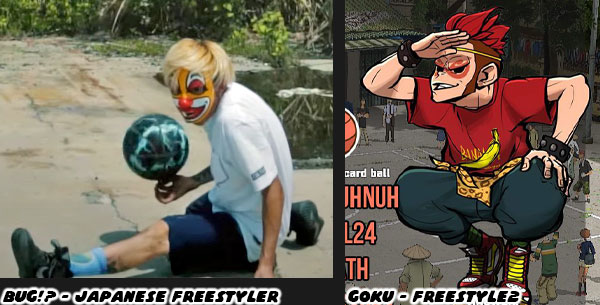
The thing about the basketball titles that JC Ent. released since 2004 were that they were expanding what people thought the game could be about. It would be too easy to go through the motions, make an NBA Street clone, and call it a day. However MMO games required much more effort, updates, patches, seasonal events, and other ways to keep audiences engaged. They, and their contemporary studios like Halcyon, and All9Fun were elevating the genre with a multi-pronged attack. The game itself was essentially going to remain the same, basketball had a number of rules that was similar across formats. Everyone knew that points within the perimeter were worth 2, and outside the arc were worth 3. Getting to the basket, and defense were the true challenges. So how to you allow character creation, and make different roles, and styles of play work in an MMO setting?
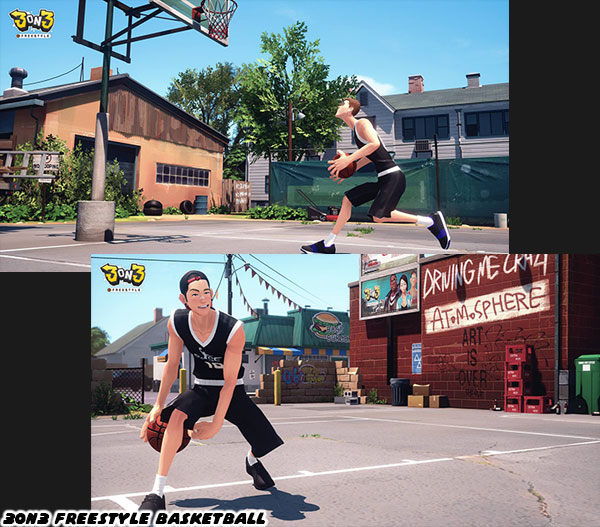
The studios actually took a page from fighting game design as much as they did from traditional MMOs. A fighting game is essentially a version of “paper, rock scissors” but using punches, kicks, and special strikes instead. The developers had to figure out which moves took precedence during a fight. This constant fine tuning allowed them to create balance between the different characters. In the real world there were weight classes between fighters. No matter how good a flyweight champion was, he would not be able to defeat a heavyweight champion in a boxing, or MMA match. The difference between power, and the ability to absorb punishment was too much to overcome in reality. But in a fighting game a teen girl could have a fighting chance against a giant wrestler thanks to the distribution of different attacks.
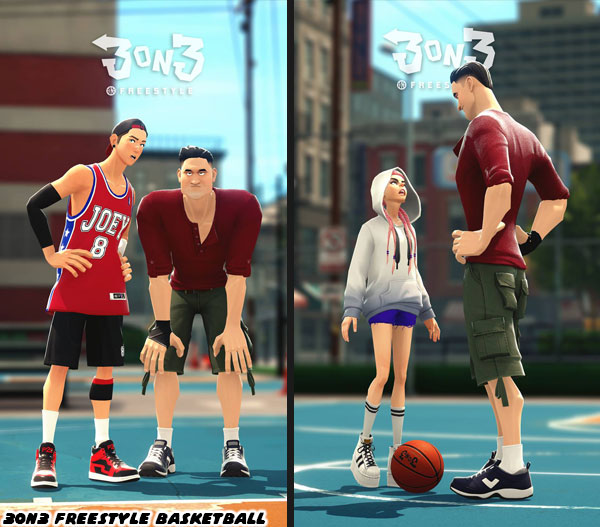
In the streetball games audiences were able to create their own custom baller, and use skill points to build up certain moves, which benefited their style of play. Some people focused on people that could shoot the ball with tremendous accuracy. Some wanted speedy players that could cut through defenders, and reach the basket for a dunk. Some wanted defensive powerhouses that could not only stop shooters, and cutters, but could grab rebounds for multiple attempts at the basket. The best part was how the different strengths, and weaknesses showed up in the game. It didn’t matter if the character was gigantic, super short, thin, or muscular. You could have “special moves” that allowed you to push characters out of the way, increase the speed of passing, catch rebounds, dunk from further out, run past defenses, or block opponents. So it was possible to have a short girl act as a center for a team because she could shove her way into position, and jump high enough to contest any shot. It was an amazing mechanic that earlier studios, like EA Big didn’t even consider when they were developing the NBA Street series. Learning the advantages of different combinations could literally make every game a new experience.
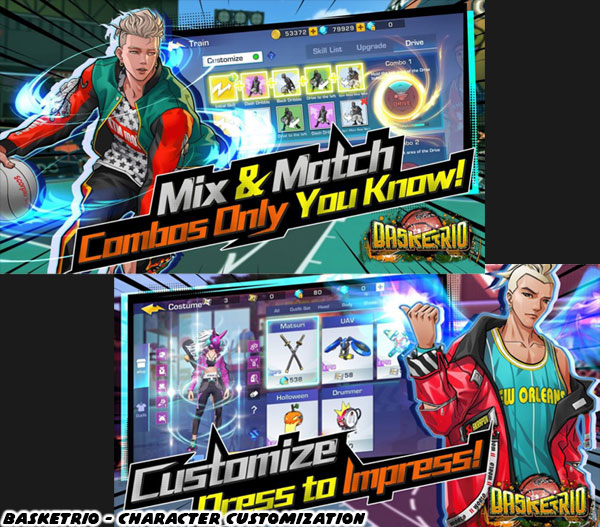
The way the studios turned skill trees, and special moves as part of the process of building an ideal basketball player was very engaging. That style of making the player the star of the game, and allowing them to figure out what worked best for them would make its way into the modern crop of fighting games such as Street Fighter 6, Mortal Kombat 1, and Tekken 8. Not only could audiences put together a library of moves, they could also customize the look, and accessories on the characters as well. This was one of the many tricks that studios used to keep players coming back. As anyone that has played Fortnight, or other MMOs, there were countless tricks that the developers exploited to keep audiences coming back. There were daily tournaments, or daily challenges. Exclusive items that could be won via raffle, or unlocked as a loot box. During seasonal events you might be able to earn exclusive gear, stickers, accessories, or outfits for your avatar. Of course micro transactions were also available to unlock some items without grinding.
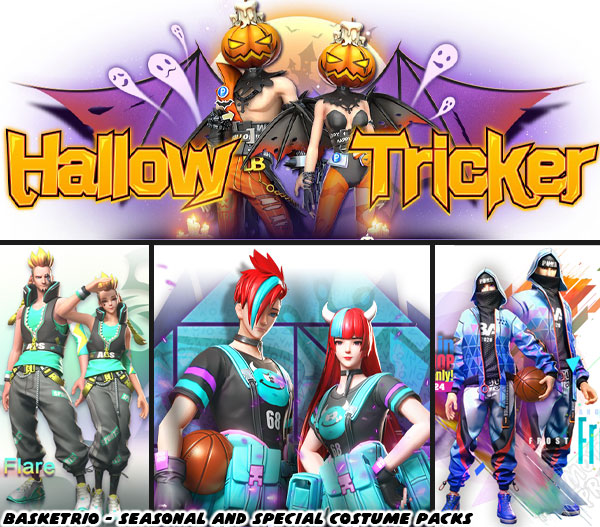
There were other ways that publishers used to keep the game feeling fresh. Not only could players customize their characters, but they could also visit different courts. Each one had a completely different atmosphere. Most of the studios would start with playgrounds, and other urban areas as the backgrounds for the street games. After every legendary real-world court, or inspired by a real-world location had been unlocked in a game the studios had to get more creative with locations. They started adding more esoteric sites to visually break up the mood. During seasonal events like Halloween you might get a foggy concrete court, lit by streetlights, surrounded by chain link fences, and zombies. Or fresh snow shoveled off of a green court during Christmas time. The gorgeous public courts on Venice Beach were a ready built destination, but nobody would have thought that a court on the moon surrounded by astronauts, and aliens would be even be in the cards. Each of these locations were enjoyable, and helped keep audiences engaged.
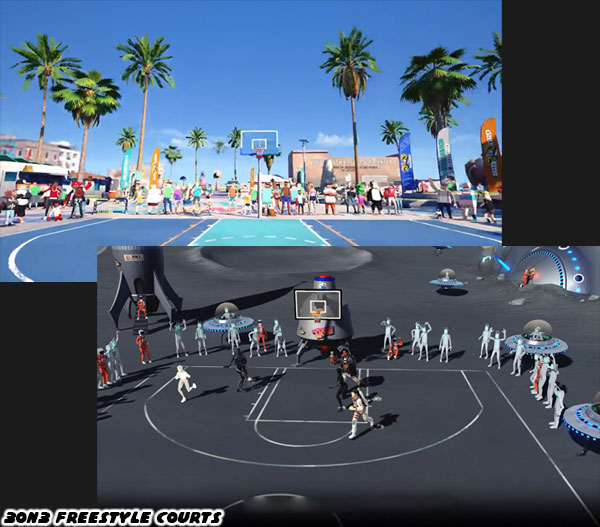
The ability to make continuous money from a free-to-play title was a great benefit for publishers. Micro transactions allowed them to offer free content, pay their employees, and build the engines for cross compatibility, or the next entry in the series. Gamers got to become part of the community, stay engaged with their friends, and help build a reputation for themselves online. I personally was against micro transactions. I have an addictive personality, and I know that it takes effort each, and every day not to fall into bad habits. This is easier for some people than others. I know that the lucky draws, and other gamifications of drops trigger the same parts of the brain as obsessive gamblers. I feel like every company that goes down this route is aware that it isn’t easy for people to budget themselves for the game, and instead spend money they shouldn’t trying to unlock a certain exclusive. Yet they push forward with those plans anyway because the sales numbers are just too good. That’s all I will say about it.
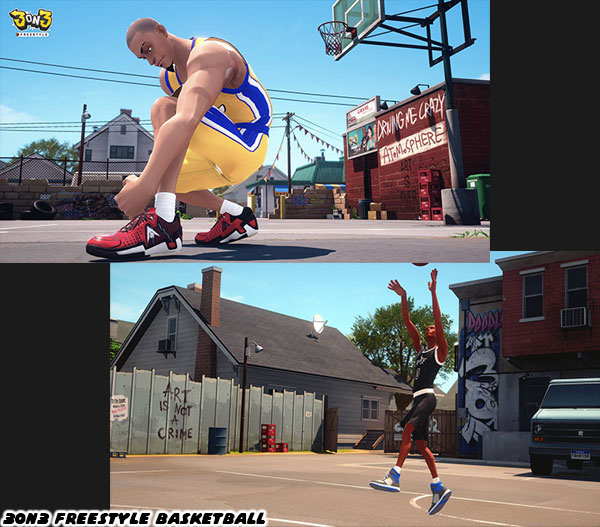
MMO basketball games from South Korea, Taiwan, and China added a lot to the genre over the past 20 years. One of their biggest contributions was storytelling through the character designs. I’ll look at that on the next blog. Until then I would like to read your take. Did you ever play any of the online basketball games, or the older NBA Street games? Do you think that being able to create, and customize your own character was going to be the standard for every video game moving forward? Tell me about it in the comments section. As always if you would like to sponsor me
please visit my Patreon page and consider donating each month, even as little as $1 would help make better blogs and even podcasts!






















No comments:
Post a Comment